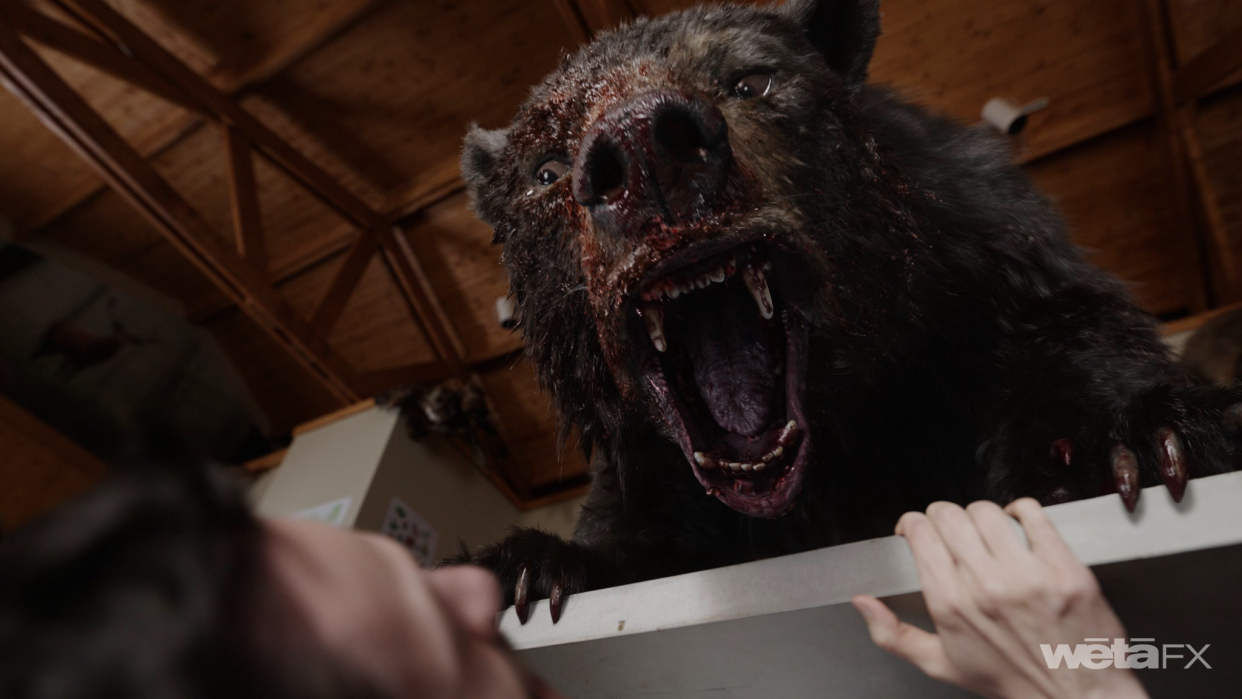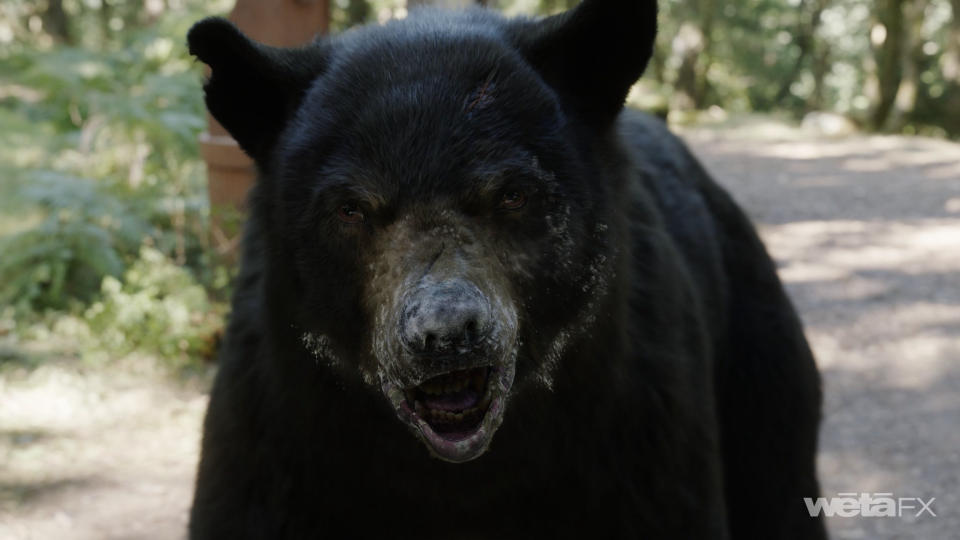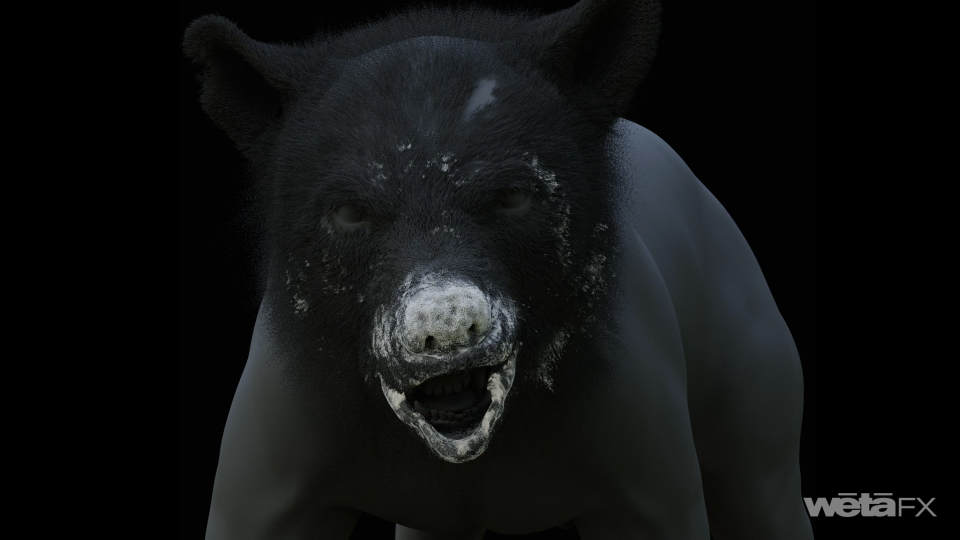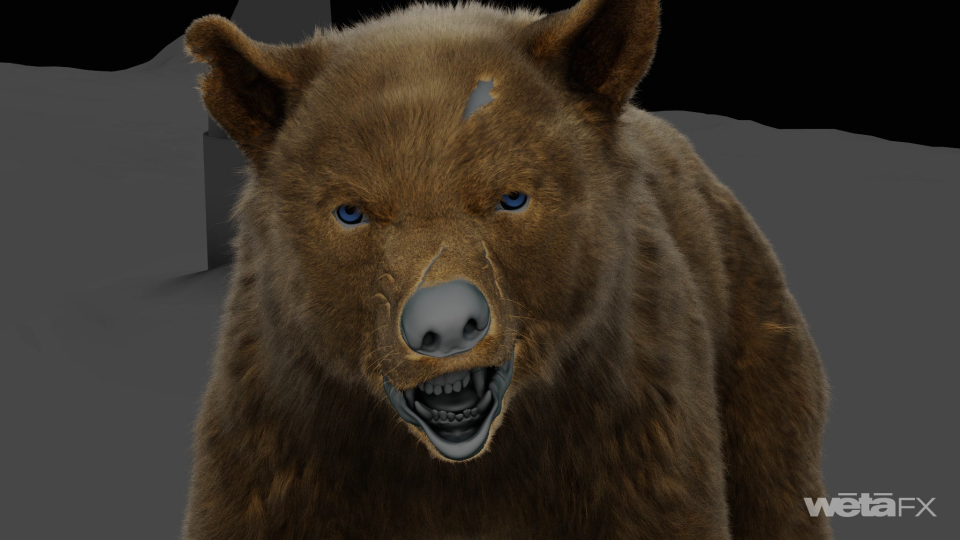‘Cocaine Bear’: How Weta FX Crafted the Funny and Ferocious Cokie the Bear

There were two things that director Elizabeth Banks insisted on when it came to animating Cokie, the CG star of the black comedy, “Cocaine Bear.” First, she can’t be an inherent killing machine, despite her coke-fueled rampage for more blow and blood. Two, she had to look photoreal — or the movie falls apart.
But that wasn’t a problem for the wizards of Wētā FX, who know their way around creature animation (including Gollum, Kong, the Na’vi, and Caesar), and are on the verge of winning the VFX Oscar for “Avatar: The Way of Water.”
More from IndieWire
“The initial brief from Liz on that first call was that the subtlety had to come through,” Wētā’s VFX supervisor Robin Hollander told IndieWire. “Here’s a story of a mother protecting her cubs, and she’s just fallen victim to the war on drugs, if you will. She’s not inherently bad. But there’s no point in doing this if she’s not photoreal.”
Inspired by the 1985 true story of a drug runner’s plane crash and a duffel bag of cocaine ingested by a black bear that died, the film becomes a wild, grisly, what-if about a 500-pound apex predator that becomes hooked on the white powder and the mayhem that ensues in a Georgia forest. The challenge was achieving a delicate dance between funny and ferocious. But because quadrupeds are not conducive to motion or performance capture, the black bear was entirely keyframe-animated.
However, Banks wanted a bear performer to interact on set with the cast (led by Keri Russell, Alden Ehrenreich, Margo Martindale, and the late Ray Liotta) and crew for better integration of live-action and CG. They hired Allan Henry, who studied mo-cap with Andy Serkis and performed with Serkis and Terry Notary in the “Planet of the Apes” franchise. He donned costumes and prosthetics made by Wētā Workshop before Wētā FX comp’d Henry out and replaced him with the CG Cokie.

Courtesy of Wētā FX/Universal Pictures
For Hollander, it was important to explain the VFX process early on to Banks, so that she would understand what to expect from the evolving CG model. Photorealism, therefore, was not instantaneous. “It was establishing her expectations so she didn’t freak out or worry that her initial brief wasn’t being met,” he said. For example, often they would update existing shots with a newer build of Cokie if it suited the shot. “I think she learned a lot about the visual effects process and that really helped build trust,” he added.
The only initial anxiety was the prospect of collaborating with producers Phil Lord and Chris Miller, the Oscar winners behind the animated “Spider-Man: Into the Spider-Verse” and this year’s highly anticipated sequel, “Across the Spider-Verse.” “You kind of think you’re showing something to someone who understands the craft as well as you do, which was kind of daunting at times,” Hollander said. “But they were really supportive of everything we did, and I think that’s a testament to our crew and the animators, especially the emotion they managed to get out of this bear performance.”
Although the producers didn’t provide actual animation notes, Miller emphasized during an early call that Cokie had to look coked-out of her brain? but not goofy; “Cocaine Bear” wasn’t a cartoon. “We pitched different animalistic behaviors and the one we referenced often was the sun bear,” Hollander noted. “Because they just look a bit cooked. Their eyes are all over the place, their tongue is really lopsided. They’re quite ferocious when they get into a coconut. That seemed like really fun behavior that we could model the cocaine addiction on, like what would a real bear do?”

Courtesy of Wētā FX/Universal Pictures
Lighting was crucial, too, particularly with blood on black fur not showing up well, so they utilized helper lights to highlight the blood areas. As a result of the pandemic, there was an extended pre-production period, which allowed Wētā to get an early start on the Cokie model and prepare on-set planning with previs. As the title character, the bear demanded a lot of close-ups, and adjustments were made to improve the animation and the facial fur increased from half a million strands to about 4 million. And they added a meniscus layer to the eyes to help capture a range of emotions, from tripped out to ravenous.
Up until now, the best CG bear, of course, was in “The Revenant” (which earned Industrial Light & Magic a VFX Oscar nomination). Hollander and his team analyzed “The Revenant” bear in determining what worked and what didn’t for their purposes. They noticed several noticeable differences. First, you don’t see much of the mauling “Revenant” bear, which was great for shock value, whereas Cokie has substantial screen time. That meant more opportunity for her animated performance, but also greater anatomical complexity, too. For instance, the hind legs of “The Revenant” bear were bent. But this was not anatomically correct and proved ineffective for Cokie, so they straightened out her hind legs, which benefited her movement. The end result is that Hollander believes they surpassed the look and performance of “The Revenant” bear.

Courtesy of Wētā FX/Universal Pictures
While there are many funny and ferocious highlights, two standouts are the introduction of the coked-up Cokie and her wrestling scene with Ehrenreich. In the opening, we first glimpse Cokie bumping aimlessly into a tree before the first attack on a couple of hikers. “My background is as a compositor,” Hollander said, “so putting things in a scene that has a lot of twigs, branches, bushes, shrugs is really tricky. Then there’s the mauling at the end. We had Allan drag the actress [Hannah Hoekstra] through the bush, which meant we had stunt pads that we had to remove. We had to create roto mats for all the bushes and whatnot; we had to remove Allan and we had to add Cokie back in. Actually, it was a very challenging sequence for integrating her.”
Henry was invaluable in working on set during Ehrenreich’s scene with Cokie. Hollander and the team figured out the circumference difference between Henry and Cokie, and then the costume department fit the actor in a black lycra foam suit and helmet. (He looked a bit like Rick Moranis in “Space Balls.”) But Henry couldn’t get too close to Ehrenreich.
“On paper, it was a really challenging scene,” Hollander said. “But I think the way we managed to plan it and the way it came off was really successful. It felt very natural and integrated really well. And what was really cool was it gave Alden something to fully interact with. The dimensions had to line up because, otherwise, if he’s hugging a human and then suddenly you try and put a 500-pound black bear in between, it would just look weird.”
Best of IndieWire
Sign up for Indiewire's Newsletter. For the latest news, follow us on Facebook, Twitter, and Instagram.

